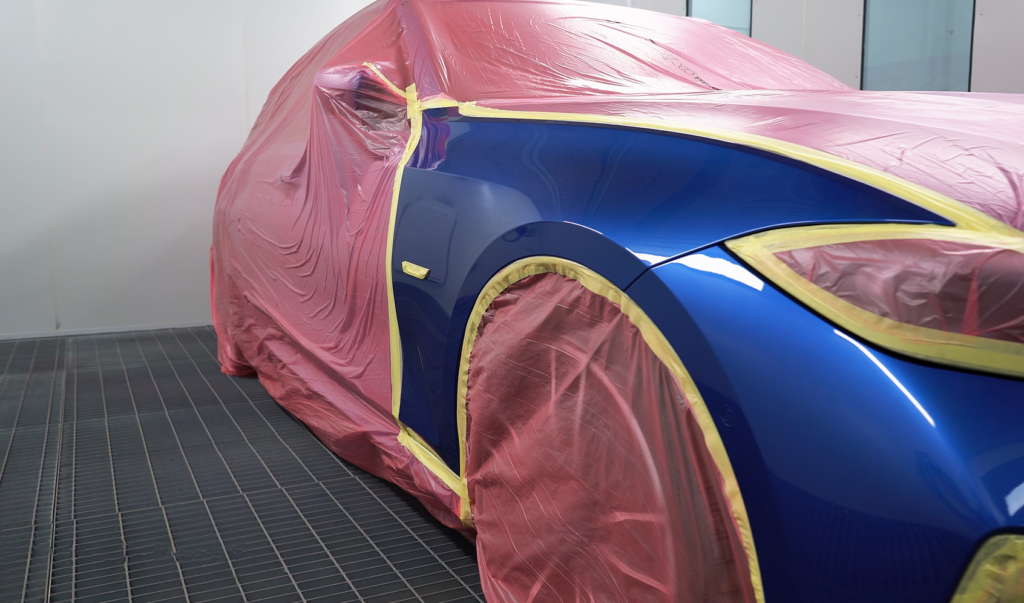
1. OVERSPRAY
This occurs when the paint surface is unprotected. It can be eliminated with the use of Wondermask paint absorbent polythene masking car covers or sheeting. De-grease and pre-tape area for painting. Dispense the masking material from a dispenser unit at either end of the vehicle. Pull material over the car to length required, minimising waste and saving time.
2. UNDERSPRAY
This can happen when there is insufficient airflow or dust extraction in the paint cabin. This leads to the excess sprayed paint being drawn between the masking medium and the vehicle, depositing a fine mist on the “protected” surface. Ensure that there is negative air pressure in the spraybooth.
3. GHOST MARKS
Ghost marks are often mistaken for underspray. They are as a result of water entrapment or moisture between the paint finish and the masking during the bake cycle. Make sure that the paint surfaces are dry before masking, and when using polythene masking that it has the capability to minimise staining risks.
4. IMPRESSION MARKS
These are a direct result of masking on top of vulnerable substrate most commonly associated with undercured paint, often from a previous repair. You need to be sure that the paint surface to be masked is fully hardened. Investigate for evidence of previous paint repair which could result in impression marks.
Caution should be exercised when masking onto previously painted surfaces. If you feel that there is a vulnerable substrate the masking media should be removed prior to the bake cycle.

5. DEFORMATION OR MELT
Deformation or melt of masking films can result in either a ghost or impression on the paint surface. The deformation of the masking film may occur when using high intensity infra-red dryers where the operating distance between the lamps and the masked object is below manufacturers recommendations. Operatives should follow manufacturer’s guidlines on the use of its equipment. Masking films are available specifically for use with infra-red dryers.
6. PAINT FLAKE
This can occur on polythene masking not specially treated for paint adhesion or to attract overspray. Flaking paint from the masking can cause contamination to the wet, repaired surface, which results in costly, further rectification. use a recognised paint absorbent polythene masking product, which is also fibreless thereby reducing dirt inclusions.

